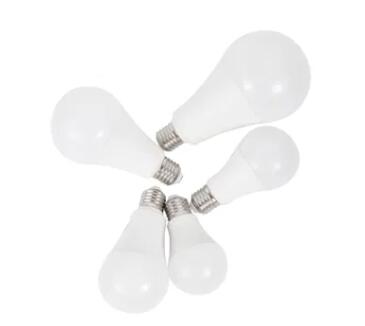Shining a Light on LED Bulb Costs: Factors That Impact Initial Prices
2023-12-05
Introduction:
As the world embraces energy-efficient lighting solutions, LED (Light Emitting Diode) bulbs have emerged as a frontrunner, offering a myriad of benefits from reduced energy consumption to longevity. However, when navigating the market for LED bulbs, you may notice a variance in prices. In this blog post, we will illuminate the factors influencing the initial cost of LED bulbs, providing insights into the considerations that shape these essential lighting investments.
1. Lumens and Brightness:
- Lumens Output:
- Lumens measure the brightness of a light source. LED bulbs with higher lumen output generally cost more as they require advanced technology and more LEDs to achieve increased brightness.
- Consider the Application:
- The desired brightness level for a particular application impacts the selection of LED bulbs. Areas requiring high illumination, such as workspaces, may necessitate bulbs with higher lumens, influencing the overall cost.
2. Energy Efficiency:
- Energy Star Certification:
- LED bulbs carrying the Energy Star certification meet stringent energy efficiency standards. While Energy Star bulbs may have a slightly higher initial cost, they often provide long-term savings through reduced energy consumption.
- Wattage Equivalency:
- LED bulbs with a higher wattage equivalency—producing the same light as higher-wattage incandescents—tend to cost more due to the advanced technology required to achieve this efficiency.
3. Color Temperature and Dimming Capability:
- Color Temperature Options:
- LED bulbs offer various color temperatures, from warm white to cool white. Specialty color temperatures or bulbs with adjustable color temperatures may be priced higher due to the technology involved.
- Dimmability Feature:
- LED bulbs with dimming capabilities often come at a higher cost. The ability to adjust brightness levels contributes to energy savings and personalized lighting experiences, making dimmable LEDs popular for specific applications.
4. Smart and Connected Features:
- Smart Home Integration:
- LED bulbs with smart and connected features, compatible with voice assistants or smartphone apps, typically have a higher initial cost. These bulbs offer advanced controls, color-changing options, and personalized lighting scenes.
- Integration with Home Automation:
- Bulbs compatible with home automation systems may cost more but provide seamless integration with other smart devices in your home.
5. Bulb Design and Construction:
- Build Quality:
- The construction and design of LED bulbs can influence their cost. Bulbs with advanced heat dissipation mechanisms, durable materials, and efficient designs may come at a higher price point.
- Specialty Bulbs:
- Certain specialty LED bulbs, like filament-style bulbs or those designed for unique fixtures, may be priced higher due to their specialized design and aesthetics.
Conclusion:
When weighing the initial cost of LED bulbs, it's essential to consider factors beyond the price tag. Lumens output, energy efficiency, color temperature, additional features, build quality, brand reputation, and potential incentives all play a role in determining the overall value of an LED bulb. By understanding these factors, consumers can make informed decisions that align with their lighting needs, energy-saving goals, and budget constraints. In the world of LED lighting, an educated investment not only brightens your space but also contributes to long-term sustainability and cost savings.



